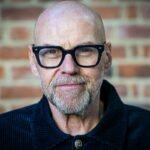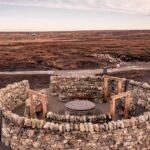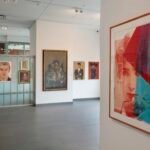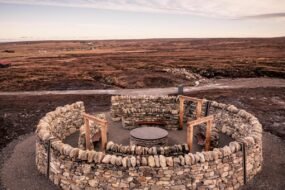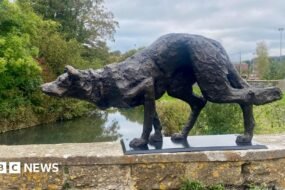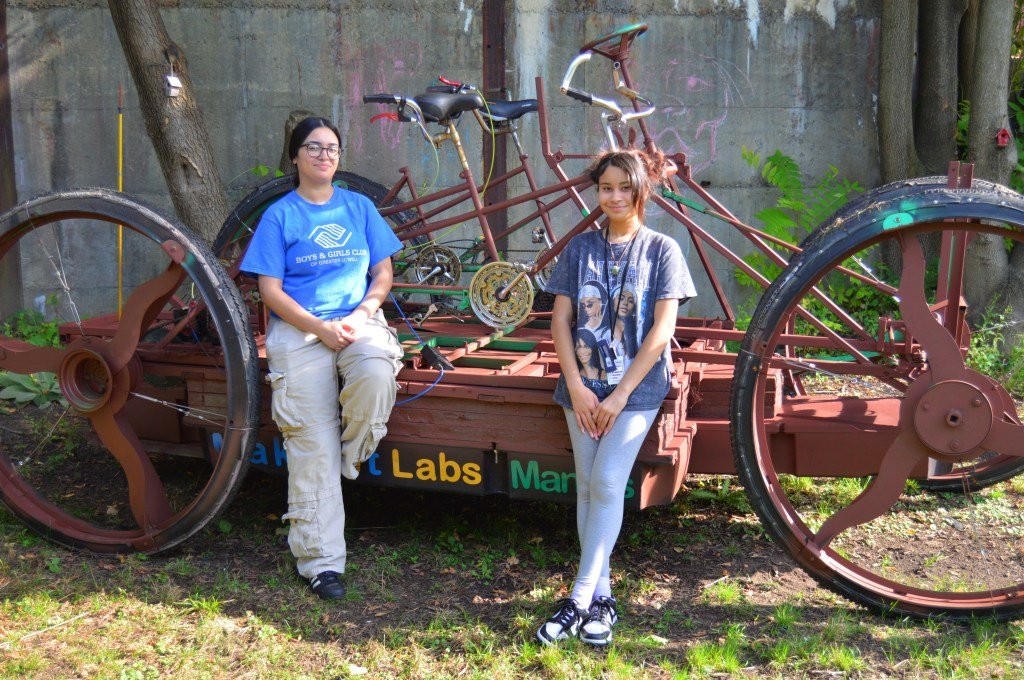
LOWELL — The 10K Lowell Kinetic Sculpture Race returns to the Mill City Saturday for the eighth year as teams combine engineering, art and a little determination to get a human-powered machine across the finish line.
There will be 15 teams from across New England competing in the race, all with their own mechanical creations designed to be driven across the bumpy cobblestones of downtown Lowell, a mud pit and the Merrimack River.
The race has been taking place in Lowell since 2016, and it is inspired by a similar event that takes place in California each year, which UMass Lowell art and design professor and Race Director Michael Roundy was able to see for himself.
“I saw seven of them out there,” said Roundy in a video call Wednesday morning. “There is a culture that goes around the Kinetic Sculpture Races, and the people that were involved were my kind of people… When I came back to the East Coast and was working here in Lowell, it seemed like Lowell had that same kind of spirit.”
The rules of the race are, mostly, straightforward. Many concern safety, like the requirement that the sculpture has to be easy to get out of, and cannot be harmful to the pilots or the environment around it as it moves. All kinetic sculptures must be able to move with no electric or gas propulsion allowed, only by the power of wind, gravity, or the humans controlling the sculpture. They must conform to Massachusetts vehicle size restrictions, while also having capacity for a single stuffed animal that must be carried by the team throughout the course.
The full list of rules and safety requirements, and the course map, can be read at Lowellkinetic.com.
While there is naturally a little bit of a competitive spirit to the race, Roundy said the teams are competing against themselves just as much as they are racing against each other.
“Teams come into this with the idea of just making it through the race. It really is a battle against yourself more than a battle against everyone else,” said Roundy.
As such, sculptures breaking down throughout the race is to be expected, and prompts teams to tinker with their machines and bring them back the following year.
Still, a breakdown isn’t necessarily the end of the race for the team, said Kinetic Sculpture Race Producer Bianca Mauro.
“Knowing that really tough challenges are a part of this course riddled with obstacles, we get to come up with the coolest volunteers ever to get these teams out of trouble,” said Mauro.
Those volunteers, Mauro said, are called “The Wrecking Crew,” and they drive around the race course with tools in the back of their vehicle, ready to lend a hand or make a quick repair to a sculpture that finds itself stuck, or even transport them to the next obstacle.
“We do what we can to bring in this wide range of people beyond the team who love to fix this stuff,” said Mauro.
Festivities begin at 9 a.m. Saturday with “Meet the Machines,” where the participating kinetic sculptures will be on display for spectators to get a closer look and meet the pilots.
The opening ceremony and race itself will begin at 11:30 a.m. on Market Street between Dutton and Palmer streets. The course goes toward Central Street before the sculptures turn toward Middle Street, which serves as the first obstacle of the course known as “Bone Shaker Alley,” thanks to the very uneven and bumpy old cobblestones that make up the street.
The course then moves back to Market Street in the other direction to Cabot Street, then to Father Morissette Boulevard and into “The Maddening Mud Pit” across from the Tsongas Center. The sculptures then make their way across the University Avenue bridge and up the river toward the Sampas Pavilion on the Merrimack River along Pawtucket Boulevard. There, the sculptures have to get into the river and travel the water route before getting back onto the street and going back the way they came, eventually ending on Market Street where the race began.
Among those designing a sculpture for this year is Brendan Falvey for his team “Stampede.” Falvey has a broad engineering background and works for Thermo Fisher Scientific in Tewksbury, where he tries to see the overall picture of a product and bridge the gaps between the needs of electrical, mechanical and software engineering.
This year is Falvey’s first time participating, which he was inspired to do after watching the race for the first time last year. His sculpture consists of five tricycles welded together to work in tandem “serpentine” style with five pilots, with larger wheels ready to install before the mud pit and water obstacle to help the sculpture float. Every team must also have a theme and decorative piece to their sculpture, so Falvey and his four teammates will be dressed up in cow colors, and their flotation wheels will be painted as such as well, hence the name Stampede.
Falvey’s goal, he said, is to “ace” the race, which means to finish without needing any outside assistance, even if a team has to fix a problem themselves.
Falvey has been working on the design for the last 10 months, he said.
“I joined Lowell Makes to learn new skills, and took a welding class. I have a wood shop at home, but I don’t have a metal shop, so I use the one there quite a bit,” said Falvey.
One team will consist of members of the Boys & Girls Club of Greater Lowell, where members and volunteers have been modifying a kinetic sculpture donated by Make It Labs in Nashua, N.H. The club has participated in the Kinetic Sculpture Race in the past, but not since the COVID-19 pandemic.
Their sculpture will be outfitted with sails and everything they need to make it look like a pirate ship. It consists of four bicycle seats on top of a mixed material platform, from which the four pilots steer and peddle the four large wheels lined with bicycle tire rubber.
Among the Boys & Girls Club team will be Damaris Gomes-Nova, 17, who is participating in the race for her first time.
“We had the opportunity to do something new we have never tried, so who knows, it could be fun,” said Gomes-Nova at the club Sept. 11.
Gomes-Nova is one of six club members working on their sculpture with staff members, including UMass Lowell sophomore Aleah Colon.
“I thought it was pretty cool to work on something that was a sculpture, but also was … hands on, and also engaging in the community and getting the Boys & Girls Club out there,” said Colon.
Colon said they still have to take the machine for a test drive, but it is known to have worked in the past as it was featured in the race last year while being driven by a group of teachers from Lowell. Gomes-Nova felt confident in the team being able to get to the finish line.
“I’ll make sure we win,” Gomes-Nova said with confidence in her team.
In a statement, Boys & Girls Club of Greater Lowell Executive Director Joseph Hungler said club leadership is “incredibly proud of our members for taking part in the Kinetic Sculpture Race.”
“This unique, creative event is a perfect reflection of the innovation, teamwork, and problem solving skills we foster and encourage every day at the club,” said Hungler. “Seeing our club kids bring their ideas to life and engage with the community in such a fun way truly showcases the power of experiential learning.”
At the Lowell Makes workshop Sept. 6, Rudy Dominguez was doing some work on his own sculpture, The Aluminum Falcon, which will be featured for the third time this year. The sculpture is themed after the iconic Millennium Falcon from “Star Wars,” and is powered by two sets of bicycle seats with a model of the ship placed over the top. Dominguez said the sculpture failed two obstacles into their last two attempts, but they are bringing it back for a third try, with some modifications.
“This entire front end is completely new and built from scratch,” said Dominguez, pointing toward where he made the changes.
The race course covers a large area, but Mauro said there would be shuttles available to bring spectators to each of the obstacles throughout the day.
Outside the race itself, Mauro said organizers are working to find more sponsors this year amid general cuts to arts funding by the state and federal governments.
“Finding funding for arts and culture is becoming more and more challenging. We are going to great lengths to go to companies willing to invest in STEM and arts events. With that investment we do have plans to expand the course, make obstacles more challenging and making things more engaging for the teams and spectators,” said Mauro.
She noted the KSR organizers have “been advised to proactively look for alternate funding for 2026.”

